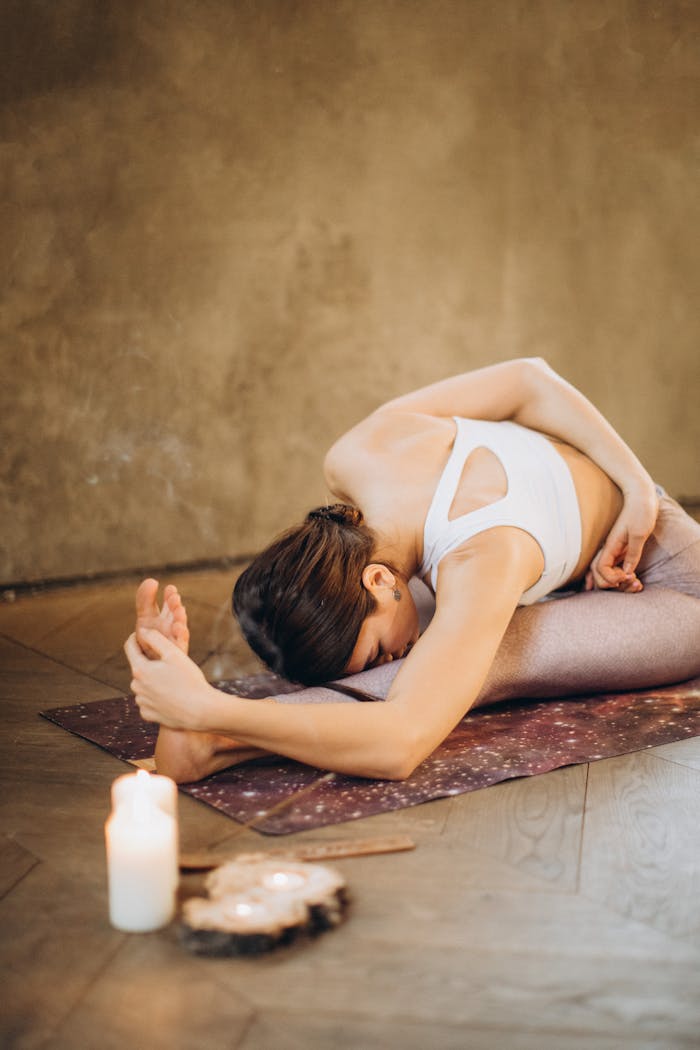Life is full of unexpected twists—deadlines shift, relationships evolve, and our bodies change. Yoga offers not just physical flexibility but also the mental resilience to adapt. Here’s how to cultivate a “flow mindset” both on and off the mat.
1. Learn to Soften into Discomfort
- Micro‑Adjustments in Poses: When a stretch feels tight, gently wobble your hips or bend your knees. Notice how tiny shifts ease tension.
- Mindful Observation: Instead of fighting discomfort, describe it to yourself: “I feel heat in my hamstrings,” or “There’s pressure in my shoulders.”
- Benefit: You train your nervous system to respond with curiosity, not resistance.
2. Practice Transitions as Metaphors
- Pose-to-Pose Flow: Focus less on holding shapes and more on the transitions—the moment your feet leave the floor in Crescent Lunge or your hips lift into Downward Dog.
- Life Application: View everyday changes (a new project, a move, a relationship shift) as transitions—temporary states that lead you to the next posture.
- Tip: Spend one session moving constantly, greeting each transition with an inhale or exhale cue.
3. Cultivate Equanimity Through Breath
- Steady Ujjayi: Use the “victorious breath” to anchor your mind whenever you feel unsteady—in a challenging arm balance or a stressful email.
- 4‑Count Box Breathing: Inhale for 4, hold 4, exhale 4, hold 4. Breaks up the cycle of reactivity by giving your mind a structured pattern.
- Outcome: A calmer baseline, so sudden changes feel less jarring.
4. Build Strength in “Edge” Practices
- Finding Your Edge: Move into a pose until you feel mild discomfort (not pain). Hold for 5–10 breaths, observing how your body settles over time.
- Resilience Training: Just as your muscles adapt, your mind learns that discomfort is temporary and manageable.
- Application: When faced with life’s “edges”—a tough conversation or an unfamiliar skill—you can remind yourself: “I’ve sat with discomfort before; I can do it again.”
5. Reflect and Reframe
- Post‑Practice Journaling: After each session, note one moment you resisted change and one where you embraced it.
- Reframe Exercise: Take a recent challenge—late traffic, a cancelled plan—and write a “yoga lens” reframe. For example: “Traffic gave me extra time for deep breathing.”
- Benefit: You shift from seeing change as a threat to viewing it as an opportunity for growth.
Bringing the Flow Mindset into Daily Life
- Morning Check‑In: Before you rise, set an intention: “Today I will practice softening into change.”
- Midday Pause: When your schedule shifts, take 3 breaths in Sama Vritti (equal breathing) before adjusting plans.
- Evening Gratitude: List three ways change served you—no matter how small.
Conclusion
Yoga’s greatest gift is teaching us to move with life rather than against it. By embracing discomfort, honoring transitions, and anchoring in breath, you cultivate a flow mindset that carries you gracefully through every high and low. Practice these steps, and watch as both your body and your life become more adaptable, resilient, and deeply alive.



